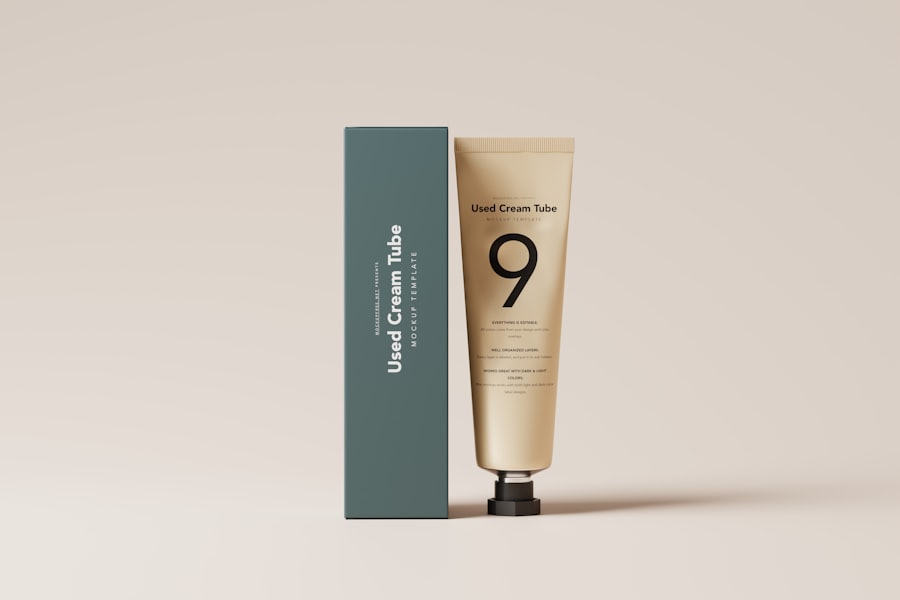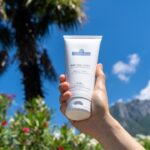Aftercare is a crucial aspect of any cosmetic or medical treatment you undergo. It serves as the bridge between the procedure and the desired results, ensuring that your skin heals properly and that you achieve the best possible outcome. When you invest time and resources into a treatment, neglecting aftercare can lead to complications, prolonged recovery times, and suboptimal results.
Understanding the importance of aftercare allows you to take proactive steps in your healing journey, ultimately enhancing your overall experience. Moreover, aftercare is not just about following a set of instructions; it’s about nurturing your skin and being attentive to its needs. Each treatment comes with its own set of aftercare guidelines, tailored to promote healing and minimize side effects.
By adhering to these guidelines, you not only protect your investment but also empower yourself with knowledge about your skin’s response to treatment. This understanding fosters a sense of responsibility and encourages you to prioritize your skin health in the days and weeks following your procedure.
Key Takeaways
- Aftercare is crucial for the success and longevity of any cosmetic treatment.
- Managing discomfort and redness is a normal part of the healing process and can be alleviated with proper care.
- Protecting the treated area from sun exposure is essential to prevent damage and maintain results.
- Avoiding certain activities and products, such as harsh exfoliants and excessive sweating, can aid in the healing process.
- Keeping the treated area clean and moisturized promotes proper healing and reduces the risk of complications.
Managing Discomfort and Redness
Experiencing discomfort and redness after a treatment is common, but managing these symptoms effectively can significantly enhance your recovery experience. You may find that applying a cold compress to the treated area can provide immediate relief from swelling and discomfort. This simple technique can help constrict blood vessels, reducing inflammation and soothing your skin.
Additionally, over-the-counter pain relievers may be beneficial if you find the discomfort to be more than just mild. Always consult with your healthcare provider before taking any medication to ensure it’s appropriate for your situation. In addition to physical remedies, it’s essential to listen to your body during this time.
If you notice that certain activities exacerbate your discomfort or redness, it’s wise to modify your routine accordingly. For instance, avoiding strenuous exercise or activities that cause excessive sweating can help minimize irritation. Remember that patience is key; as your skin heals, the redness and discomfort will gradually subside.
By taking proactive steps to manage these symptoms, you can create a more comfortable healing environment for yourself.
Protecting the Treated Area from Sun Exposure

Sun exposure can be particularly detrimental to healing skin, making it imperative for you to take protective measures following any treatment. UV rays can exacerbate redness, increase the risk of pigmentation changes, and hinder the healing process. To safeguard your skin, consider wearing a wide-brimmed hat or using an umbrella when outdoors.
These simple yet effective strategies can provide shade and reduce direct exposure to harmful rays. In addition to physical barriers, applying a broad-spectrum sunscreen with a high SPF is essential for protecting the treated area. Look for products specifically formulated for sensitive skin, as they are less likely to cause irritation.
Reapplying sunscreen every two hours, especially if you are sweating or swimming, will help maintain protection throughout the day. By prioritizing sun protection, you not only promote healing but also contribute to the long-term health of your skin.
Avoiding Certain Activities and Products
| Activity/Product | Reason for Avoidance | Alternative |
|---|---|---|
| Smoking | Health risks and secondhand smoke | Nicotine patches, gum, or therapy |
| Processed Foods | High in preservatives and additives | Fresh fruits, vegetables, and whole grains |
| Alcohol | Impaired judgment and liver damage | Non-alcoholic beverages or moderation |
| Extreme Sports | High risk of injury or death | Low-impact exercises or recreational activities |
After undergoing a treatment, it’s crucial to avoid specific activities and products that could compromise your healing process. Engaging in high-impact workouts or activities that cause excessive sweating can lead to irritation and prolong recovery time. Instead, opt for gentle exercises like walking or stretching that won’t put undue stress on your skin.
This mindful approach allows your body to heal while still keeping you active. Additionally, be cautious about the skincare products you use during this period. Harsh exfoliants, retinoids, or products containing alcohol can irritate sensitive skin and should be avoided until you receive clearance from your healthcare provider.
Instead, focus on using gentle cleansers and moisturizers that are free from fragrances and irritants. By being selective about the products you apply, you create a nurturing environment for your skin to recover effectively.
Keeping the Treated Area Clean and Moisturized
Maintaining cleanliness and hydration in the treated area is vital for promoting optimal healing.
It’s important to avoid scrubbing or using abrasive materials that could disrupt the healing process.
Instead, use your fingertips to apply cleanser softly, rinsing with lukewarm water before patting the area dry with a clean towel. Moisturizing is equally important in this phase of recovery. Keeping the treated area hydrated helps prevent dryness and flakiness while supporting the skin’s natural barrier function.
Look for moisturizers that contain soothing ingredients like aloe vera or hyaluronic acid, which can provide additional hydration without causing irritation. Regularly applying moisturizer will not only keep your skin comfortable but also promote a smoother healing process.
Monitoring for Potential Complications

As you navigate through the aftercare process, it’s essential to remain vigilant for any signs of potential complications. While most treatments come with minor side effects that resolve on their own, being aware of unusual symptoms can help you address issues promptly. If you notice increased redness, swelling that doesn’t subside, or any discharge from the treated area, it’s crucial to reach out to your healthcare provider for guidance.
Monitoring your skin’s response also involves being attentive to changes in sensation or texture. If you experience persistent pain or notice any unusual lumps or bumps forming, don’t hesitate to seek professional advice. Early intervention can often prevent more significant issues down the line, ensuring that your recovery remains on track.
By staying proactive and informed about potential complications, you empower yourself to take charge of your healing journey.
Following Up with Additional Treatments
In some cases, aftercare may involve follow-up treatments to enhance or maintain the results of your initial procedure. These additional sessions can be crucial for achieving optimal outcomes and ensuring that your skin continues to look its best over time. Your healthcare provider will guide you on when these follow-ups should occur based on your individual needs and the type of treatment you received.
It’s important to view these follow-up appointments as part of a comprehensive approach to skincare rather than an inconvenience. Each session provides an opportunity for further assessment of your skin’s condition and allows for adjustments in your treatment plan if necessary. By committing to these follow-ups, you demonstrate a dedication to achieving long-lasting results while also fostering a collaborative relationship with your healthcare provider.
Consulting with a Professional for Any Concerns
Throughout your aftercare journey, don’t hesitate to consult with a professional if you have any concerns or questions. Your healthcare provider is there to support you and address any uncertainties you may have regarding your recovery process. Whether it’s about managing discomfort, understanding what is normal during healing, or seeking advice on product selection, open communication is key.
Additionally, if you feel uncertain about how well your skin is healing or if something doesn’t seem right, trust your instincts and reach out for guidance. Professionals are equipped with the knowledge and experience necessary to provide reassurance or recommend appropriate interventions if needed. By fostering this relationship with your healthcare provider, you not only enhance your aftercare experience but also empower yourself with valuable insights into maintaining healthy skin in the long run.
In conclusion, aftercare is an integral part of any treatment process that should not be overlooked. By understanding its importance and following best practices for managing discomfort, protecting against sun exposure, avoiding certain activities and products, keeping the treated area clean and moisturized, monitoring for complications, following up with additional treatments, and consulting professionals when needed, you set yourself up for success in achieving optimal results. Your commitment to aftercare reflects not only a dedication to your appearance but also an investment in your overall well-being and skin health.
After undergoing laser hair removal treatment, it is crucial to follow proper aftercare instructions to ensure optimal results and minimize any potential side effects. One helpful resource for learning about laser hair removal aftercare is the blog section of In Laser Hair Removal’s website. In one of their articles, they provide detailed instructions on how to care for your skin post-treatment to promote healing and prevent complications. For more information on laser hair removal aftercare, visit In Laser Hair Removal’s blog.
FAQs
What is laser hair removal?
Laser hair removal is a cosmetic procedure that uses a concentrated beam of light (laser) to remove unwanted hair. The laser targets the pigment in the hair follicles, damaging them and inhibiting future hair growth.
What are the aftercare instructions for laser hair removal?
After laser hair removal, it is important to avoid sun exposure, hot showers, and excessive sweating for the first 24-48 hours. It is also recommended to use a gentle cleanser and moisturizer, and to avoid picking or scratching the treated area.
How long do I need to wait before sun exposure after laser hair removal?
It is recommended to wait at least 24-48 hours before exposing the treated area to the sun. Sun exposure can increase the risk of complications such as hyperpigmentation or burns.
Can I shave or use hair removal creams after laser hair removal?
It is safe to shave the treated area after laser hair removal, but it is important to avoid using hair removal creams or waxing, as these methods can interfere with the hair follicles targeted by the laser.
How many sessions of laser hair removal are typically needed?
The number of sessions needed for laser hair removal varies depending on the individual’s hair type, skin color, and the area being treated. On average, most people require 6-8 sessions spaced 4-6 weeks apart for optimal results.
What are the potential side effects of laser hair removal?
Common side effects of laser hair removal may include redness, swelling, and mild discomfort in the treated area. In rare cases, more serious side effects such as burns, blisters, or changes in skin pigmentation may occur. It is important to follow aftercare instructions and seek medical attention if any concerning symptoms arise.





